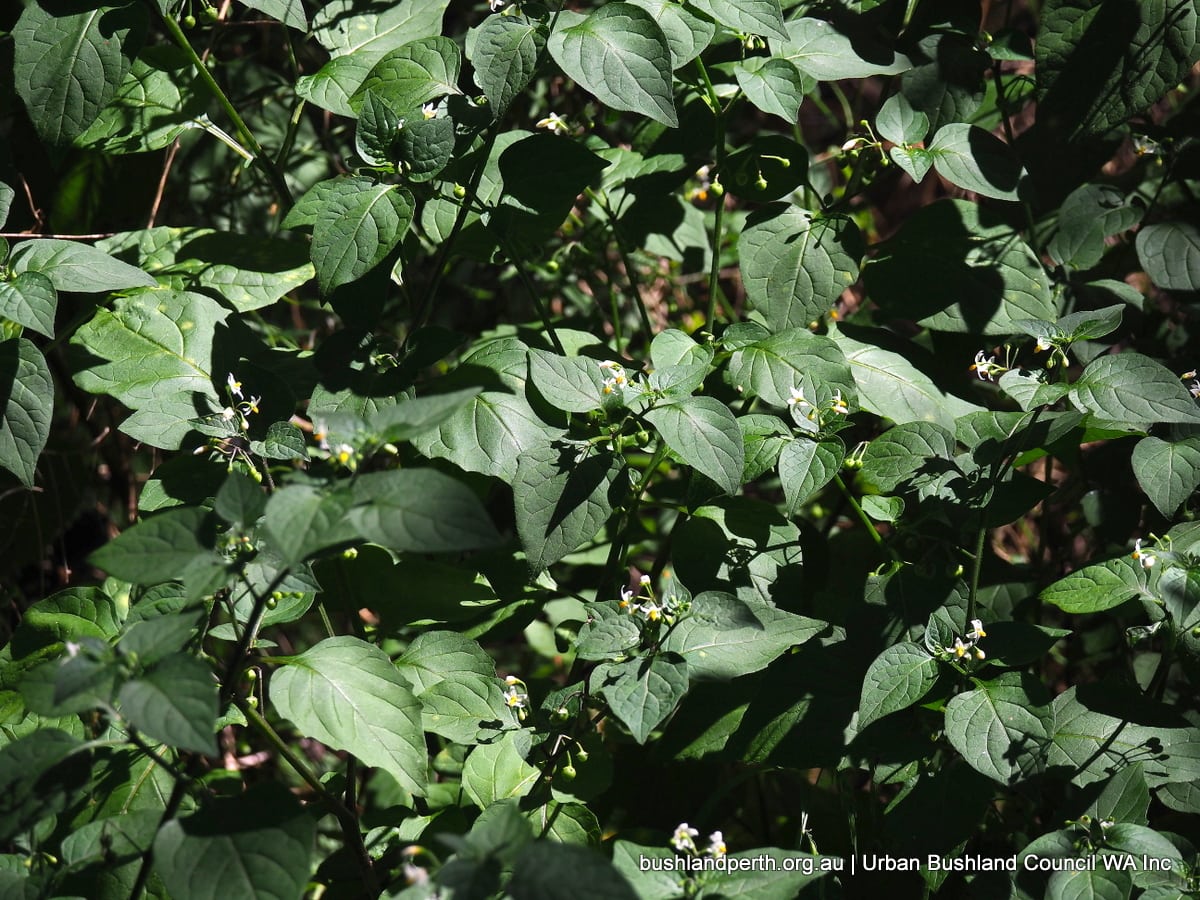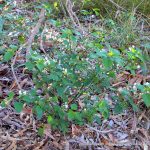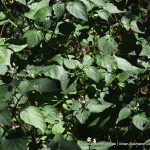Black Berry Nightshade

Common name
Black Berry Nightshade
Scientific Name
Solanum nigrum
Type of plant
Uncategorised
About this weed
Easily recognised by its star shaped white flowers and purplish to black berries, this weed originated from Europe. This perennial weed is common is urban bushland and is often mistaken for the European Deadly Nightshade.
Description
Black Berry Nightshade is an erect short-lived perennial growing to about 1 m high. It produces delicate white star shaped flowers throughout the year. It’s main method of reproduction is by seed, but can be dispersed by birds, water, soil and machinery. Flowering occurs 5-9 weeks after germination and continues until the plant dies. Green fruit and leaves may at times contain toxic alkaloids, glycosides and they accumulate nitrates.
Early germinating plants take several weeks more to flower compared to late germinating plants. Plants produce prolific amounts of seed and the seed can have high germination rates (>90%) and germination is usually staggered. Alternating temperatures are required to break dormancy and lower light intensities or darkness are generally more favourable for germination. There is vigorous recruitment from soil stored seed in burnt and unburnt areas after rain. There are levels of primary seed dormancy among populations, enabling it to maximise its chance of survival by regulating germination timing to favourable conditions. The seedbank can persist for up to 5+ years.
Impact on Bushland
This weed is a common agricultural and bushland weed. It competes vigorously for space and nutrients.
Location
These weeds are widely spread across the Eremaean Province, Northern Province and South-West Province. It is common in agricultural areas and bushland.
Priority for removal
Medium: they can disrupt ecological processes or result in loss of biodiversity.
Management (hand)
Prevent seed set for several years. Hand weed small infestations. In bushland situations, manually remove plants before flowering. For optimal manual effectiveness weed from June to November. It is best to time weed control measures to larger seedling flushes. Occasional manual weeding can be done in the other months.
Management (herbicide)
For large infestations, 1 L/ha Starane® (20 ml/10 L) applied when actively growing in summer, will provide reasonably selective control. Do not use in or near wetlands. Control infestations within 5 km of the target area to reduce dispersal of seed by birds. 1 L/ha 2,4-D amine (500 g/L) or 20 ml/10 L can also be used for control of young plants in early summer. Read the manufacturers’ labels and material safety data sheets before using herbicides. It is best to time weed control measures to larger seedling flushes. For optimal herbicide effectiveness spray from July to December.
Flowering month/s
All year
Flower colour/s
White
Information source
https://florabase.dpaw.wa.gov.au/browse/profile/7022
Additional information
https://florabase.dpaw.wa.gov.au/weeds/swanweeds/
Hussey, B.M.J., Keighery, G.J., Dodd, J., Lloyd, S.G. and Cousens, R.D. (2007) Western weeds. A guide to the weeds of Western Australia, Second Edition, The Weeds Society of Western Australia, Victoria Park, Western Australia.


